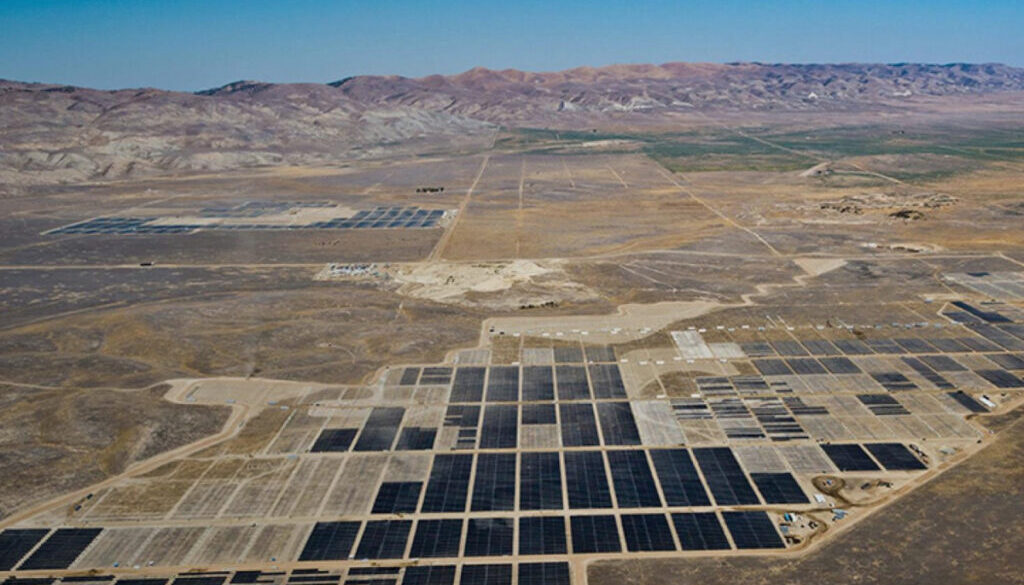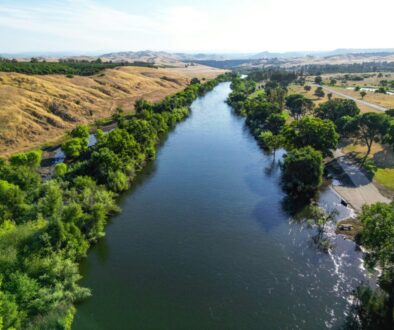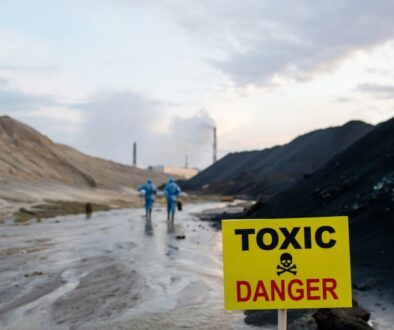Postcard from California: The Mojave Desert should not be a solar sacrifice zone
The Mojave Desert is a national treasure: a crucial habitat for thousands of indicator species, including the bighorn sheep and desert tortoises that are supposed to be protected under federal law, and the fantastical Joshua tree, found almost nowhere else on earth. In Southern California, the Mojave encompasses two iconic national parks and the country’s largest national preserve.
In recent years, newcomers fleeing Los Angeles have disrupted the Mojave, crowding the parks and special places, trampling fragile landscapes, fueling exurban sprawl, and displacing longtime residents. And now some who cherish the desert fear it is being sacrificed to the urgency of the climate crisis.
Throughout the Mojave, which reaches into Nevada, Arizona and Utah, construction of “utility-scale” solar power plants is booming.
These solar “farms,” as their developers call them, are arrays of photovoltaic panels that can cover thousands of acres and generate enough electricity to power hundreds of thousands of homes. Most of the power is sold to big utilities.
In the California part of the Mojave alone, at least 50 solar plants have been built, approved or proposed. Some are on private, state or tribal lands; others are on or near federal lands earmarked to preserve biodiversity, open space or cultural heritage.
Major expansion proposed
The US Bureau of Land Management (BLM) has opened more than 1 million acres of public land in the Mojave to potential solar development. Last month, the BLM proposed a major expansion of designated solar zones on public lands, including the Mojave, the Sonoran Desert in Arizona and the Escalante Desert in Utah.
To meet its goal of 100% clean electricity by 2045, California must quadruple its use of solar and wind power. The Biden Administration’s goal is to get 45% of US electricity from solar by 2050. Both state and federal policy prioritize the rapid buildout of utility-scale solar over solar panels on individual rooftops.
To meet those goals, building in the Mojave – with lots of sun, undeveloped land, and proximity to a huge urban population – may seem like a no-brainer. It’s not that simple. Consider:
- Solar plants can disturb or destroy habitat for the desert tortoise – the state reptile, feared to be nearing extinction – the desert kit fox and dozens of other threatened species.
- Heat from the 40-story towers of the Ivanpah Solar Plant, on the California-Nevada border, incinerates thousands of migrating birds each year.
- Solar plants are encroaching on Joshua Tree National Park and Native American sacred sites.
- Bulldozing the desert degrades the soil’s ability to sequester greenhouse gases and generates harmful air pollution.
“There’s definitely a schism among environmentalists who feel climate trumps everything and those of us who believe habitat and biodiversity are also essential,” said Chris Clarke, associate director of the National Parks Conservation Association’s California desert program.
“I’m talking about people who see a desert valley full of thousand-year-old yuccas and think the best use is to scrape it flat and put in solar panels with a 25-year lifespan,” said Clarke, who also co-hosts a desert protection podcast.
To Clarke, the climate crisis is too urgent to rely on utility-scale desert solar as the first line of defense. Permitting and construction take too long, and the money would be better spent on grants to households for a rapid expansion of rooftop solar, rather than to make profit for developers and big utilities.
Is it realistic to think rooftop solar could provide enough energy to power California – and, in theory, even the world?
A study by the UCLA Institute of the Environment and Sustainability found that putting solar panels on every rooftop in Los Angeles County served by Southern California Edison could generate 94% of electricity demand in the service area.
Since 2020, state law requires that all new homes must have solar panels, a mandate extended this year to new commercial buildings. But last year, state regulators slashed the rebates utilities must pay solar customers for energy returned to the grid, which is projected to dramatically slow the growth of rooftop solar in older homes and buildings.
Regulators should not have bowed to the agenda of Edison and other monopoly utilities, who want to control and profit from the transition to clean energy. Instead, they should have looked for ways to fast-track the growth of consumer-owned rooftop solar.
If not the desert, where?
There are other alternatives to utility-scale solar on public lands.
- In the San Joaquin Valley, persistent drought and contaminated soil could force farmers to stop growing crops on up to half a million acres over the next two decades. A study by the Union of Concerned Scientists found that building solar plants on the retired cropland could provide the region with more and better jobs.
- In Stanislaus County, the state is funding a pilot program to put floating solar panels on irrigation canals. Researchers at UC Santa Cruz and UC Merced estimate that covering the state’s 4,000 miles of farm canals with solar panels could generate a sixth of California’s electricity needs and prevent evaporation of enough water to serve three million households.
- A report from Environment America estimated that rooftop solar on the more than 10,000 big-box stores in California could generate electricity for almost 900,000 homes. And by one estimate, putting solar panels above all large parking lots nationwide, as France recently mandated, could generate more electricity than current US demand.
When the Los Angeles Times asked readers where to put solar panels instead of the desert, suggestions included unproductive farmland, irrigation canals and parking lots. But one reader had an idea that would put the burden where it belongs:
“To me,” wrote Jeff Barnes of Claremont, an LA suburb, “the most logical placement of solar panels is along the Southern California Edison rights of way under its transmission lines. The question is, what’s stopping them?”
- Bill Walker has more than 40 years of experience as a journalist and environmental advocate. He lives in California’s San Joaquin Valley.
(Opinion columns published in The New Lede represent the views of the individual(s) authoring the columns and not necessarily the perspectives of TNL editors.)
 EWG
EWG



